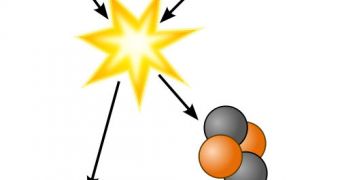During nuclear fusion experiments, a great deal of heat tends to flow out of the test chambers. Researchers have long since tried to develop a way of predicting how this process occurs, but to no avail. A scientist in the US was recently able to create a simulation detailing this phenomenon.
Based at the US Department of Energy's (DOE) Princeton Plasma Physics Laboratory (PPPL), professor of astrophysical sciences Robert Goldston, the lab's former director, managed to surpass the challenges associated with creating such a model.
Thanks to his diligent work, physicists may soon be able to move past a key barrier that currently hampers progress in nuclear fusion research. The new simulation covers a structure called the scrape-off layer, which exists in tokamaks.
The latter are the most commonly used types of nuclear fusion reactors. Their main job is to confine extremely hot plasma, using very strong magnetic fields. But regardless of their intensity, the magnetic fields cannot prevent heat from separating itself from the flowing system (scrapping off).
Once this happens, heat is directed into the divertor chamber, in a form of a very thin and highly concentrated layer. What the new simulation does is predict the width of this layer, a critical measure for advancements in tokamak technologies.
With this knowledge, experts can develop new methods for preventing the layer of heat from reaching the bottom of the divertor chamber. The floor is made up of a special plate that must not be subjected to such extreme temperatures
“If nothing was done and you took this right on the chin, it could be a knockout blow. This [model] allows you to depict the size of the challenge so you can think through what needs to be done to overcome it,” Goldston explains.
The expert published details of his model in the January issue of the journal Nuclear Fusion. Recently, he also presented the model at the 20th Annual International Conference on Plasma Surface Interactions, held in Aachen, Germany.
“What's stunning [about the model] is how closely the values correspond to the data, both in absolute value and in variation with the plasma current, magnetic field, machine size and input power,” Goldston concludes.

 14 DAY TRIAL //
14 DAY TRIAL //